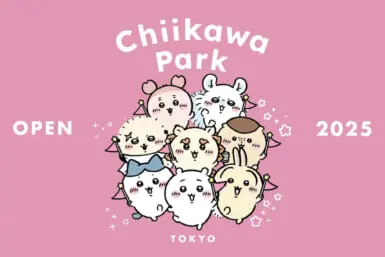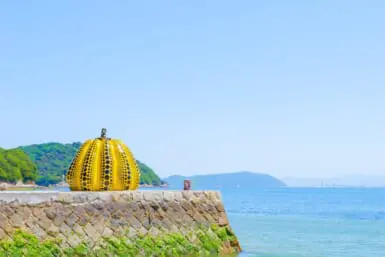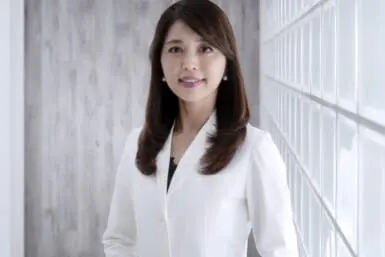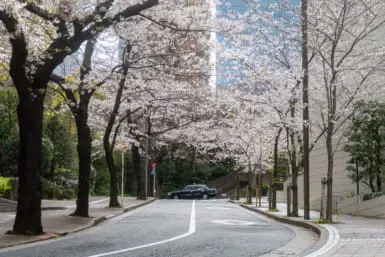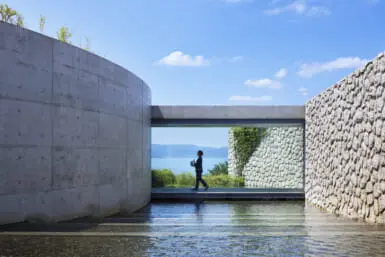Hakone: Tokyo’s favorite Western retreat
by Benjamin Freeland
Tokyo may be a remarkably pleasant place for a city of 12 million people, but the daily grind of life in the city invariably is enough to try the patience of even its most devoted citizens, as is evident in the annual mass exodus during the spring Golden Week holiday. It is therefore fortunate that Tokyo’s much-vaunted transportation infrastructure offers the multitude of escape routes from the metropolis. Of these, the train lines heading out towards Tokyo’s hilly western backyard are the most enticing.
While an hour’s travel in any other direction from the center of town leaves one still ensconced in suburbs, a wonderful network of national and quasinational parks sits within a short jaunt to the west, featuring such popular escapes as Mt. Takao, the Tanzawa Traverse and Chichibu-Tama National Park. However, it is Hakone and the surrounding Fuji-Hakone-Izu National Park that has long served as Tokyo’s favorite western retreat.
The site of the historical Hakone Checkpoint on the ancient Tokaido Road and long an important transportation hub, Hakone has been a popular tourist destination for city-dwellers since the 1920s thanks to its irresistible mix of lush, verdant mountain landscape (including some of the finest views of Mt. Fuji anywhere), superb range of onsen (hot springs) and health resorts and historical allure.
Getting There and Around: While travelers in bygone days had to trek for a whole day from old Edo to reach Hakone Checkpoint, the town is now within 70 minutes’ reach from the capital on board Odakyu Electric Railway Co.’s flagship ‘Romancecar’ limited express train, which links Shinjuku with Hakone-Yumoto Station. First inaugurated in 1957, the Romancecar was for a time the world’s fastest passenger train before being unseated by the Shinkansen seven years later.
The trip from Shinjuku on the Romancecar costs ¥2,020 (including the ¥870 limited express surcharge), and passengers reserving sufficiently ahead of time can opt for the observation cars at the front and rear ends of the train. Access on the regular Odakyu express train takes two hours and costs ¥1,150. The popular Odakyu Hakone Freepass, which costs ¥5,000 for a two-day period (or ¥5,500 for three days), covers transportation between Hakone and Shinjuku (base fare only) as well as all transportation within the region—which includes the scenic Hakone-Tozan Line mountain railway that links Gora with Odawara via Hakone-Yumoto, the Hakone-Tozan Cable Car that runs up the mountainside from Gora to Sounzan and the Hakone Ropeway that takes travelers from Sounzan down to Togendai on Lake Ashi via the boiling sulfur pits of Owakudani—as well as the garish Disneyland-esque ‘pirate ships’ that crisscross Lake Ashi, accessing Togendai, Moto-Hakone and Hakone Town. This pass also allows for discounts at many hot springs, museums, restaurants, and other attractions within the Hakone area.
The Odakyu Hakone Freepass is available for sale at the Odakyu ticket office at Shinjuku Station and at other major stations along the Odakyu Line.
Food and Lodging: Hakone has long been a stopping point for travelers to and from Tokyo (and formerly Edo), and as such it is hardly surprising that the place has a well-earned reputation for fine hospitality. Hakone’s most storied hotel, the Fujiya (Tel: 0460-82- 2211; www.fujiyahotel.jp/english/index.html), was Japan’s first Western-style hotel when it opened its doors in 1878, and the beautifully preserved Meiji-era edifice still stands as living testimony to the Giyofu school of architecture, Japan’s late 19th century take on the Victorian aesthetic.
Other high-end options include the Prince Hakone (Tel: 0460-83-1111; www.princejapan.com), which offers a breathtaking view of Lake Ashi, as well as the legendary Gorakadan (Tel: 0460-82-3331; www.gorakadan.com), a Relias Chateaux hotel that offers a sumptuous mix of old-world ryokan hospitality and modern amenities. Less expensive options include the Fuji Hakone Guest House B&B (Tel: 0460-84-6577; http://hakone.syuriken.jp/hakone/), a long-popular establishment among both Japanese and foreign visitors offering onsen facilities, comfortable Japanese-style rooms and English-speaking staff, as well as the dilapidated but hospitable Kappa-Tengoku Minshuku (Tel: 0460-85-6121), which offers large rooftop open-air baths and is conveniently located two minutes from Hakone-Yumoto Station.
Hakone also offers an abundance of eating options, covering all budget ranges. The region’s most famous gastronomic draw is its iconic black onsen eggs (kurotamago), which are boiled on-site in the sulfurous ponds at Owakudani. According to legend, one of these eggs will add seven years to your lifespan.
“Hakone has been a popular tourist destination
for city-dwellers since the 1920s thanks to its irresistible
mix of lush, verdant mountain landscape,
superb range of onsen and health resorts.”
Activities: While there is no shortage of activity to be enjoyed in Hakone, most travelers visit the place with the expressed purpose of doing very little except lounging in hot springs. A majority of the lodging options in the area appear to have onsen on site, and many of these establishments open their baths to outside visitors for around ¥500. The area also offers a number of large-scale spa operations, including Tenzan Toji-kyo, a large onsen facility with indoor and outdoor baths and sauna as well as a free shuttle bus to and from Hakone-Yumoto Station, and the more opulent Hakone Kowakien Yunessun, which features Dead Sea-style salt baths and Jacuzzis, an outdoor area that includes waterfalls, rocks and a water slide, and an outdoor relaxation section that offers sake, coffee, green tea and wine baths, as well as the attached Mori-No-Yu facility, a more orthodox Japanese-style onsen. For the more energetic traveler, the national park that encompasses Hakone also offers a plethora of hiking trails, accessible by way of the park’s network of cable cars and ropeways, guides to which can be found at the visitors’ center in Togendai. The volcanic pools at Owakudani (literally the ‘Great Boiling Valley’) are a popular attraction, as is Lake Ashi and the picturesque Hakone Shrine, with its famous torii gate standing sentinel within the adjacent lake water. The Hakone Museum of Art, which houses a wide variety of artwork as well as a beautiful Japanese garden, is also worth a visit.
Contact Information: Odakyu Sightseeing Service Center, Odakyu Railway Shinjuku Station 1F (Ground Floor) West Side of Odakyu Shinjuku Station, Tel: 03-5321-7887. Email: welcome@odakyu-dentetsu.co.jp or see www.odakyu.jp/english/center/index.html. Service available in Japanese, English, Chinese and Korean.


